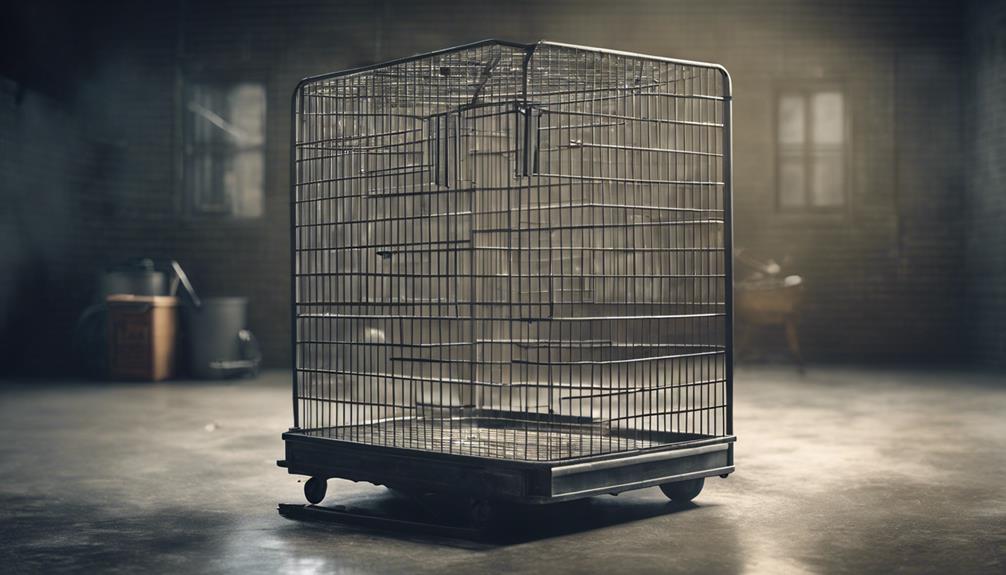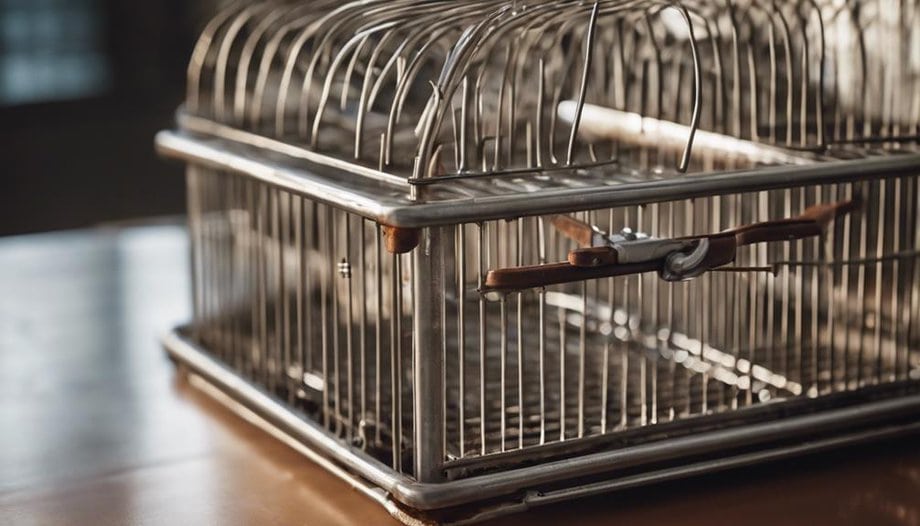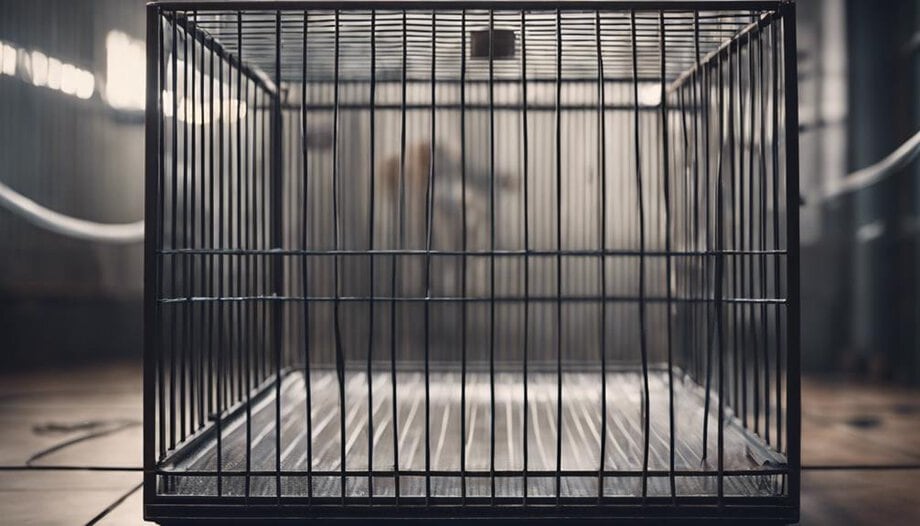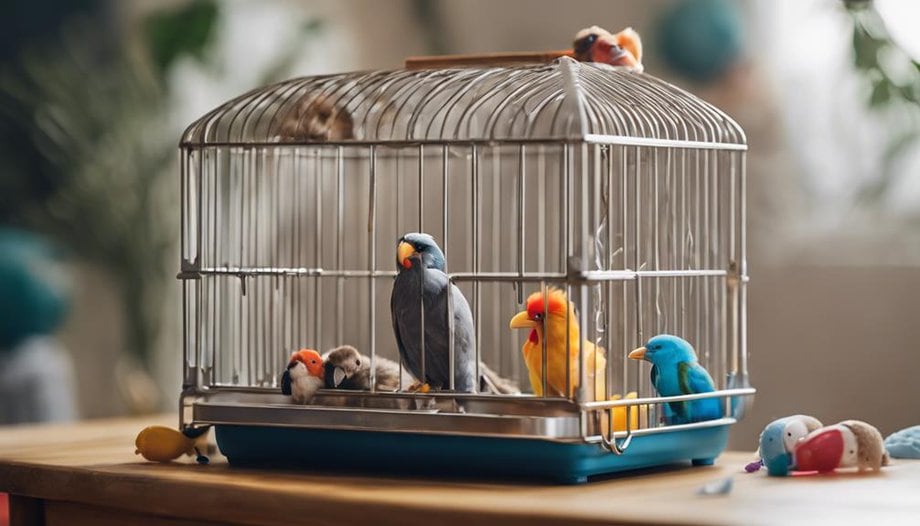How to Select a Cage That Facilitates Easy Cleaning

When choosing a pet cage that is easy to clean, there are several factors to consider. First, look for a cage with removable trays or pans that can be easily taken out for cleaning. This makes it much simpler to clean up any messes that your pet may make.
Additionally, cages with smooth surfaces and minimal crevices are easier to wipe down and disinfect. Avoid cages with intricate designs or decorations that can trap dirt and bacteria.
Another important factor to consider is the material of the cage. Plastic and metal cages are generally easier to clean than wood or fabric cages. Plastic cages can be wiped down with a damp cloth, while metal cages can be hosed off or scrubbed with a brush.
Finally, consider the size of the cage in relation to the size of your pet. A larger cage will provide more space for your pet to move around and will be easier to clean since there will be less crowding of waste in the cage.
Cage Size and Layout
When selecting a cage for easy cleaning, it's essential to consider the appropriate size and layout to ensure the comfort and well-being of the pet. This involves paying attention to factors such as bar spacing and ventilation. Bar spacing is crucial as it prevents the pet from escaping and getting injured. Optimal ventilation is also vital to maintain a healthy environment within the cage.
Accessibility and layout play a significant role in ensuring that cleaning the cage is a hassle-free task. A well-thought-out layout can make it easier to reach all areas of the cage for cleaning purposes. Additionally, easy accessibility to different parts of the cage, such as the bottom tray or nesting areas, simplifies the cleaning process and promotes hygiene.
Material and Durability

When considering a cage for easy cleaning, the material and durability play crucial roles.
The quality of the material will affect how long the cage lasts and its ability to withstand wear and tear.
It's essential to choose a sturdy and durable material that can withstand the activities of the pets housed within.
Material Quality
Selecting a cage with high-quality materials and durable construction ensures longevity and ease of maintenance for pet owners. When considering material quality, pet owners should prioritize the following:
- Durability: Opt for cages made from sturdy materials like stainless steel or powder-coated metal to withstand wear and tear over time.
- Safety: Choose materials that are non-toxic and pet-safe to ensure the well-being of your furry friends.
- Ease of Cleaning: Look for materials that are easy to wipe down or wash, such as smooth plastics or metals, to streamline the cleaning process and maintain hygiene standards.
Longevity and Strength
To ensure the longevity and strength of a cage, pet owners should prioritize selecting materials known for their durability and resilience. Durability enhancement in cage materials is crucial for maintaining a sturdy structure over time, especially in environments where pets may exhibit chewing or scratching behaviors. Opting for cages constructed from high-quality metals like stainless steel or powder-coated steel can significantly increase the lifespan of the enclosure.
These materials aren't only durable but also resistant to corrosion and rust, ensuring that the cage remains strong even with frequent cleaning. By choosing materials that prioritize durability, pet owners can enhance the cleaning efficiency of the cage while ensuring it remains a safe and secure environment for their beloved pets.
Tray Design and Accessibility

When considering tray design and accessibility for a cage, aspects such as tray removal ease and spillage containment are crucial.
The ability to quickly and efficiently remove the tray for cleaning can significantly impact the maintenance process.
Moreover, a well-designed tray that effectively contains spills can help in keeping the cage clean and hygienic.
Tray Removal Ease
For optimal ease of cleaning, consider the tray design and accessibility when choosing a cage. When focusing on tray removal ease, these points can make a significant difference:
- Tray Locking: Look for cages with secure tray locking mechanisms to prevent accidental spills and ensure stability during cleaning.
- Quick Release: Opt for cages that offer quick-release features for easy tray removal without the need for tools, saving time and effort.
- Accessibility: Choose cages with trays that slide out smoothly or have wide openings for convenient access when cleaning or replacing bedding.
Spillage Containment
Considering spillage containment in cage design involves evaluating how the tray design and accessibility contribute to maintaining cleanliness and ease of maintenance. To ensure leak prevention and cleaning efficiency, selecting a cage with a well-designed drip tray is crucial for effectively managing spills and reducing mess. The drip tray should be easily accessible for quick removal and cleaning. This feature not only aids in containing any spills but also simplifies the cleaning process, promoting hygiene and reducing the time spent on maintenance tasks. By investing in a cage with a thoughtfully designed drip tray, caregivers can efficiently manage spillages, minimize mess, and maintain a clean environment for their pets.
| Features | Benefits |
|---|---|
| Leak prevention | Prevents spills and leaks |
| Drip tray | Collects spills for easy removal |
| Cleaning efficiency | Simplifies maintenance tasks |
Ventilation and Airflow

Proper ventilation and airflow are crucial factors to consider when selecting a cage for easy cleaning. The design of the cage plays a significant role in ensuring optimal airflow efficiency, which aids in maintaining a fresh and healthy environment for the inhabitants. Here are three key aspects to focus on:
- Ventilation Placement: Strategic positioning of ventilation openings is essential to promote proper air circulation within the cage. Placing vents near areas prone to odor buildup or moisture accumulation can help prevent these issues, making cleaning more manageable.
- Cage Design: Opt for cages with well-thought-out designs that incorporate ventilation features seamlessly. Mesh panels or perforated walls can enhance airflow without compromising the structural integrity of the cage, contributing to a cleaner living space for your pets.
- Cleaning Convenience: Choose cages that not only prioritize ventilation but also make cleaning tasks easier. Removable trays, accessible doors, and detachable components facilitate thorough cleaning, ensuring that your pets' habitat remains hygienic with minimal effort.
Removable Components and Accessories

When selecting a cage for easy cleaning, the inclusion of removable components and accessories is key to simplifying maintenance tasks and ensuring a sanitary environment for your pets. To enhance cleaning efficiency, look for cages with easily detachable trays, platforms, and ramps.
Removable components allow for thorough cleaning by providing access to all areas of the cage. Additionally, cages with simple assembly mechanisms make it easier to disassemble and reassemble for deep cleaning sessions.
When it comes to waste disposal and odour control, consider cages with removable waste trays that can be quickly emptied and cleaned. Accessories such as litter boxes or bedding trays that can be easily removed and replaced contribute to maintaining a fresh and hygienic living space for your pets.
Prioritizing cages with these removable components and accessories will streamline your cleaning routine, keeping your pets' habitat clean and odor-free.
Cleaning Tools and Supplies

For efficient cleaning of your pet's cage, having the right cleaning tools and supplies is essential to maintain a hygienic environment. When it comes to selecting the tools and supplies for cleaning your pet's cage, consider the following:
- Odor Control: To keep unpleasant odors at bay, invest in a pet-safe cage cleaner or disinfectant that's effective in neutralizing odors. Look for products specifically designed for pet enclosures to ensure the safety of your furry friend.
- Waste Disposal: Having a designated waste disposal system is crucial for maintaining cleanliness. Disposable gloves, waste bags, and a dedicated trash can near the cage make waste disposal more convenient and hygienic. Regularly disposing of waste helps prevent the buildup of bacteria and odors.
- Cleaning Tools: Equip yourself with cleaning tools such as a small broom and dustpan, microfiber cloths, scrub brushes, and a pet-safe cage scrubber. These tools make it easier to remove debris, wipe down surfaces, and scrub away tough stains, ensuring your pet's cage stays clean and hygienic.
Maintenance Routine and Tips

To maintain a clean and healthy environment for your pet, establish a regular maintenance routine and follow these essential tips. Cleaning frequency is crucial in preventing odor buildup and ensuring your pet's well-being. It's recommended to spot clean your pet's cage daily, removing any uneaten food, soiled bedding, or droppings. A thorough cleaning should be conducted weekly, involving a complete change of bedding and washing of the cage with mild soap and water.
Techniques for maintaining cleanliness include using pet-safe disinfectants to sanitize the cage and accessories. Ensure all items are completely dry before reintroducing your pet to the habitat to prevent any potential health issues. Regularly inspect the cage for wear and tear, replacing any damaged parts promptly.
Preventing odor buildup can be achieved by incorporating baking soda or activated charcoal in the cage to absorb odors. Additionally, providing proper ventilation and ensuring adequate airflow in the cage can help minimize unpleasant smells. By following these maintenance routines and tips, you can create a comfortable and hygienic space for your beloved pet.
Frequently Asked Questions
How Often Should I Replace the Bedding in the Cage?
Bedding replacement frequency in a cage depends on the type of pet and its cleanliness habits. Regularly monitor for dirt, odor, and dampness. For safety, use cleaning products approved for pets and follow the instructions carefully.
Are There Any Specific Cleaning Products I Should Avoid Using on the Cage?
When it comes to cleaning cages, it's vital to steer clear of harsh chemicals. Instead, opt for safe alternatives like vinegar and water. These eco-friendly cleaning techniques will help keep your pet's habitat sparkling clean and toxin-free.
Can the Cage Be Easily Disassembled for Deep Cleaning?
The cage's durability ensures long-lasting use, while its design facilitates efficient cleaning. Disassembling for deep cleaning is easy, allowing thorough maintenance. These features make the cage a practical choice for pet owners seeking convenience and cleanliness.
Are There Any Special Considerations for Cleaning the Cage if I Have Multiple Pets Housed Together?
When housing multiple pets together, keeping the cage clean becomes crucial for pet compatibility and hygiene practices. Regularly removing waste, providing separate feeding areas, and monitoring behavior can help maintain a healthy environment for all inhabitants.
How Can I Prevent Odors From Building up in the Cage Between Cleanings?
To prevent odors from building up in the cage between cleanings, ensure proper ventilation and choose an appropriate bedding type. Establish a regular cleaning schedule to maintain freshness and cleanliness, promoting a healthy environment for your pets.










